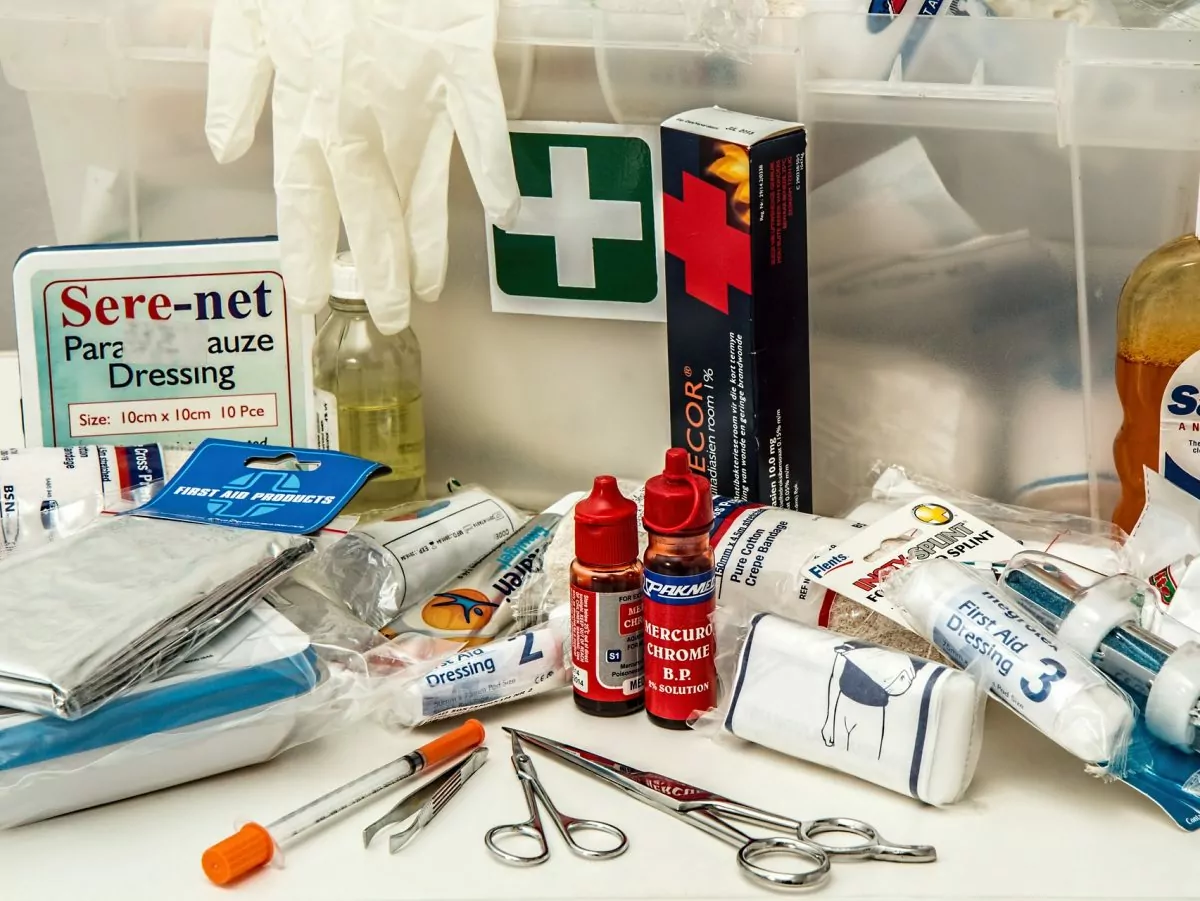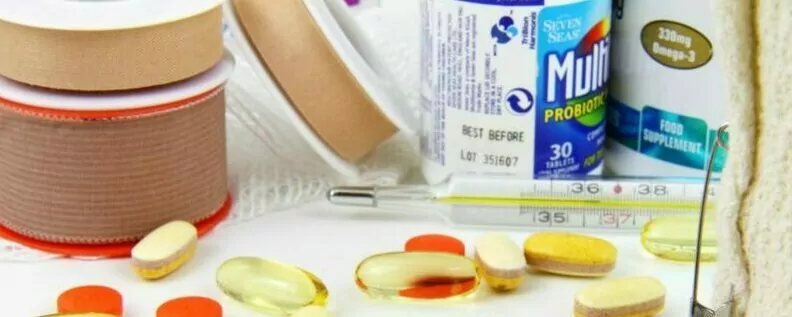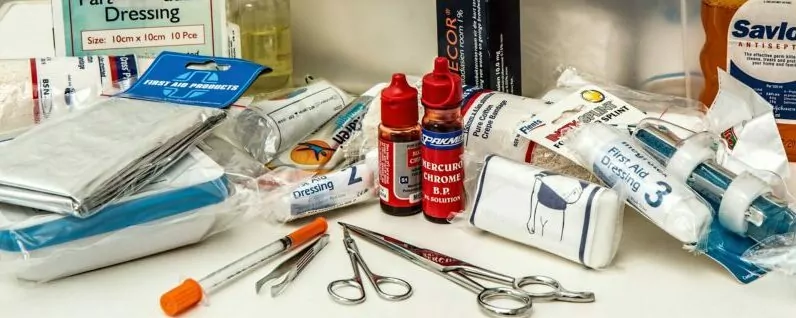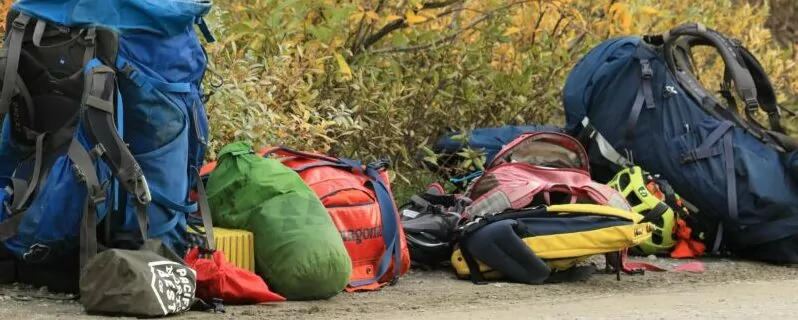Building A Personal Travel First-Aid Kit & Gear Repair Kit

In our many years of organizing adventure travel itineraries all over the world, we have found that everyone who travels should carry a small personal first aid kit. On all our treks, our staff carry emergency equipment available to help guests, staff and really anyone we come in contact with during a trip. This equipment always includes emergency communication devices and a full first aid kit with contents that we have found to cover most illnesses and injuries we have most commonly dealt with during our trips. But what about on your travels to meet our group or after our trip ends when you continue on? We like to educate our guests to be prepared and travel smart. In many of the areas we travel, certain medicines and first aid supplies can be hard to come by or are even nonexistent. Because of this, it is always important to have a small amount of first aid supplies and any prescription or over the counter (OTC) medicines you may need with you while you travel. We also always recommend discussing travel plans, immunization requirements and any OTC medicine use with your Primary Care Provider before trips.
Why bring a first-aid kit?
The FAKs of Life
You’re walking down a busy side street in Kathmandu. A man on a motorcycle is weaving through the crowd of pedestrians and comes a little too close to bumping you. As you hurriedly step out of his way you shred your toenail on the street curb. While the cut is small, it’s bleeding a lot. What do you do?
Here’s another scenario: you and your travel buddy are exploring Cusco after a turbulent flight from Lima. After enjoying a couple of pisco sours you confidently devour some street food and head back to your guesthouse for a nap. When you awake, your head is throbbing and your stomach feels dodgy. Now what?
Minor discomforts can be a big deal when you’re traveling abroad. Your travels will likely bring you to an area with limited access to amenities. Even in big cities it can be an ordeal to find a pharmacy, especially if there is a language barrier. Sometimes alleviating nuisance symptoms can significantly improve your experience. There are a myriad of scenarios in which having your own personal first-aid kit (FAK) can be a game changer, and once you start bringing your own mini FAK you’ll wonder what took you so long.
Store Bought or Homemade?
There are many options out there for pre-assembled emergency travel first-aid kits. A quick internet search will provide you with enough FAKs for every blister in the world and while many of these kits are a great starting point, inevitably you will find that your specific and unique personal needs require a customized kit. It is easy to get suckered into bringing a full-size emergency first-aid kit like you’d hope to find on a lifeboat. In actuality, you can get away with a fairly comprehensive FAK that’s smaller than your toiletries. The beauty of making your own FAK is that over time you can refine it until you have a kit that gives you the peace of mind that you’re prepared for anything.
Explore Your World. Award Winning Hiking Guides
What should I bring?

Building your own kit is fun! Most of the contents of your FAK will be in 3 categories: over the counter medicines (meds.), wound care, and miscellaneous.
The Pouch
The pouch is the best part. Express yourself! For years I used a little Crown Royal bag to house my first aid kit, but I recently upgraded to one of these colorful pouches by Cotopaxi because it’s simple, easy to organize, and I like llamas. Any small toiletry bag would work fine.
Unique-to-you/ prescription medications
Prescription meds. can be most complicated to obtain abroad. I often tell people to include their critical daily medications in their toiletries rather than in their FAK, since they will be using their toiletries every day. I’ve seen people leave a trip before it even started because they forgot an important prescription drug. Don’t forget your meds!!
Over the Counter Meds
These are going to be your symptom alleviators. They may not save your life, but they might save your trip by helping you feel better. Having your own personal stash means that you don’t have to waste your time trying to find the nearest convenience store or pharmacy when you have a headache or upset tummy. Since many of these are common household medicines, I have a small fleet of refillable pill jars which I fill and replenish from my medicine cabinet. Lots of meds come individually packaged in the perforated foil, so I just break off a couple doses and toss them in a ziplock bag. REMEMBER: ideally you will only need each med once or twice on a trip, and only as a quick fix before you can find a pharmacy or doctor if needed. Good decision making and risk management are critical for your well-being. Just because you packed a FAK doesn’t mean you want to use it!
Here is a list of useful OTC medications and their applications:
- Pain relief: Ibuprofen, aspirin, acetaminophen (Tylenol)
- Antihistamine: Diphen (Benadryl)
- Non-drowsy allergy: Loratadine (Claritin)
- Antacid/heartburn relief: Bismuth tablets (Pepto-bismal, Tums)
- Anti-diarrheal: Loperamide hydrochloride (Imodium)
- Cold/Flu Medecine: brand of choice
- Nasal decongestant: pseudoephedrine (Sudafed)
- Sore throat: lozenges
- Electrolyte replacement/ drink mix: brand of choice
- Anti-itch: hydrocortisone cream
Wound Care
Wound care is something that happens infrequently but can be an ordeal if you’re unprepared. Usually you can get away with a simple bandage, but the benefit having of a proper wound care kit when you need it is worth the effort. IMPORTANT: learn how to use these things properly before you leave for your trip. Improperly treated wounds invite infection, and that can be a trip ender! Keep it clean! Bonus: these materials can also be used for blister management. Your wound care kit should include:
- bandages (just a couple of a few different sizes)
- gauze pads (virtually weightless, good for larger scrapes)
- medical or athletic tape
- ace bandage
- alcohol wipes
- disposable surgical gloves (2-3 pairs)
- antibiotic ointment
Again, don’t go overboard with quantities. You just want to be able to patch yourself until you can get to proper care.
Miscellaneous
A lot of what I’ve included as “miscellany” can go either in your FAK or your toiletries. These are probably the items you will use the most and are essential to any travel kit.
- nail clippers (critical tool for any finger or toe drama, or to remove flaps of dead skin from a cut)
- tweezers (splinters, cactus spines, bee stingers, bits of glass, etc)
- hand sanitizer
- sun screen
- lip balm
- female hygiene products
- earplugs (shared sleeping, rowdy city nights, public transport, obnoxious travel buddy, etc)
Gear Repair Kit
Do I really need a gear repair kit?
Now that you’ve got your first-aid kit sorted out, here is another feather of invincibility in your travel cap: a gear-repair kit (GRK). I keep this kit with my FAK at all times and some of the items have some first aid applications as well. A gear repair kit is simple: basic, versatile ‘fix-it-quick’ tools and materials that are super easy to find at home and can be indispensable in remote areas. Picture this all-to-common scenario:
It’s day 2 of your trek. After a couple miles on the trail, you feel a flapping sensation coming from your foot. Upon examination, you find that the sole of your trusty boot is completely detached and about to fall off. The only other shoes you brought are flip-flops, hardly enough to handle the rugged terrain. Your friend looks at you with disappointment. “How old are those boots, anyway?” she asks. “But they’ve been sitting in my storage unit for years,” you stammer, “I’ve barely used them!”
Here is another classic mishap:
Your trusty backpack, its been around the world with you and it shows. As you wander the villages of rural northern Vietnam, taking in the sights and smells, suddenly your pack awkwardly swings off your back. A busted strap! What are your options?
For me, the classic scenario involves my glasses getting stepped on or broken in some way. That’s why I started carrying my trusty gear repair kit for unforeseen wardrobe or gear malfunctions.
Whats in your GRK?
My gear repair kit is exceedingly simple and has saved the day on many occasions. A stop in any hardware store can get you everything you need. My kit includes:
- small roll of duct tape (I use Gorilla brand)
- small tube of superglue
- eyeglasses repair kit (get the one that comes with extra screws! Usually found near the checkout counter)
- extra batteries
- a couple rubber bands
- 2 extra ziplock bags
- travel sewing kit
- several cable ties (AKA zip ties)
- paracord (I bring enough to string up a makeshift clothesline)
- spare lighter in a ziplock bag
Duct tape and superglue are the classic versatile repair tools, but cable ties are super versatile, super lightweight, and in many cases can hold your gear together long enough to get back to civilization. I’ve used them for busted zippers, backpack straps, etc.
Did you get soaked by a sudden downpour? Or maybe you end up doing some emergency laundry in your bathroom sink? The paracord clothesline is one of my classic travel hacks and the cord can also be used as a makeshift strap or belt.
These items can provide a quick and temporary fix for a myriad of minor gear or wardrobe malfunctions, but if you want to go one step further and be prepared to make bomb-proof repairs on even the toughest materials, I recommend this specialty tool, especially for shoe repairs.
Shoe repair? Really?
Its true. One of the most common field repairs is trying to tame flapping boot-soles. The best way to deal with this is to TEST YOUR FOOTWEAR BEFORE YOU LEAVE for your trip. Often, the glue that holds your soles will degrade over time. If caught early, this can be mitigated with super glue. I’ve had super glued soles go dozens of miles over several days. However, if the soles come off completely and you’re in a wet environment you may need to go big. The sewing awl can pull thread through the soles of your shoe for a sturdy repair that can get you back to the trailhead and impress your comrades.
Remember: being prepared is the only way and its fun! Most good stories have an unexpected turn of events, but better stories involve being prepared and overcoming adversity. Pack your FAK & GRK with pride and overcome those obstacles with confidence and grace!
Wildland Trekking Hiking Adventures
As the world’s premier hiking and trekking company, Wildland believes in connecting people to fantastic environments in amazing ways. Wildland Trekking Company offers an array of incredible hiking and trekking experiences in 9 states and 11 countries. Read more about our world-class destinations.
To learn more about our guided backpacking trips and all of our award-winning hiking vacations, please visit our website or connect with one of our Adventure Consultants: 800-715-HIKE.






